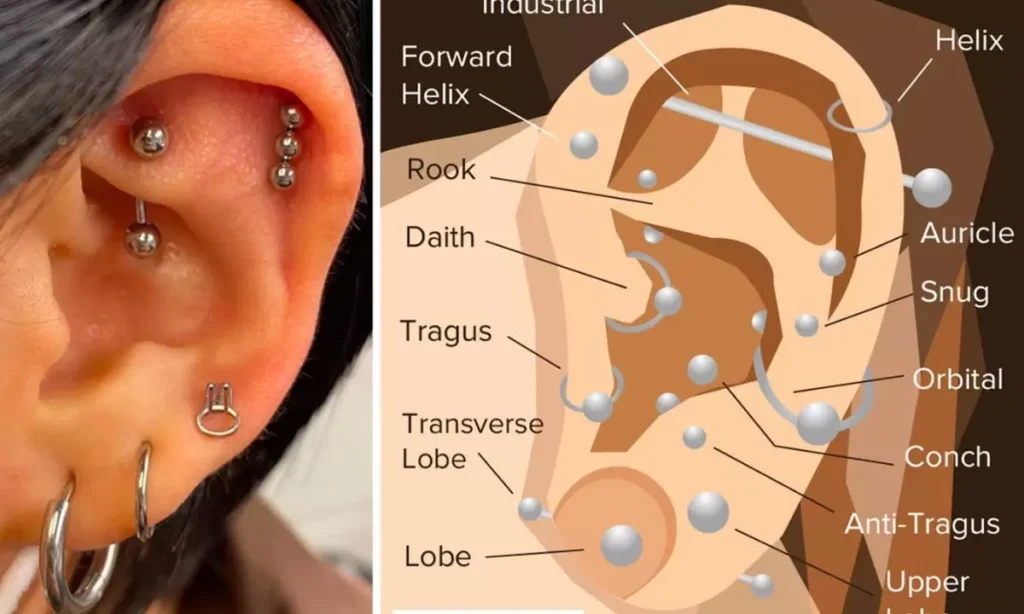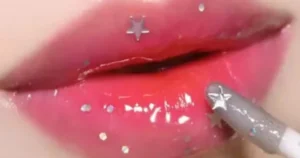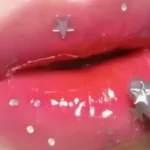Getting your ears pierced is an exciting way to accessorize your look. However, it’s important to properly care for new piercings as they heal. This post will discuss how long you should wait before changing earrings after an ear piercing.
Following the recommended timeframe helps ensure your piercing heals smoothly and avoids risks like infection. Read on to learn the general guidelines for changing earrings as well as tips for proper aftercare.
When should I change earrings after ear piercing?
The general guideline is to wait 4-6 weeks before changing earrings after a new ear piercing. Your ears need time to fully heal from the initial trauma of being pierced. Changing earrings too early can disturb the healing process and increase your risk of infection.
What is the right ear piercing aftercare?
Proper aftercare is essential for allowing your ears to heal properly. For the first few weeks, clean your ears 2-3 times a day using a sterile saline solution. Gently wipe away any discharge or crusties – do not soak the piercings. Avoid touching or moving the earrings as much as possible. You should also refrain from activities that may cause trauma like pulling or bumping the earrings.
Bottom-line Earrings
In summary, most piercers recommend waiting at least 4-6 weeks before changing earrings in a new piercing to avoid setbacks in healing. Signs that your piercing may be ready for a change include having no tenderness, discharge or swelling for over a month. However, some piercings like cartilage may take even longer to fully heal.
Different Types of Ear Piercings

There are several types of ear piercings beyond the standard lobe piercing. Cartilage piercings like the helix (outer rim) and tragus (outer flap) tend to heal more slowly, taking 3-6 months. Piercings through the thicker cartilage like the rook (inner ridge) or industrial (through the rim) can take up to a year to heal.
Common Ear Piercing Infection Signs
Some signs that an ear piercing may be infected include pain, redness, swelling, warmth, pus or a foul odor coming from the piercing. Seek medical advice if you suspect an infection as you may need antibiotic treatment. In the meantime, continue proper daily cleaning and avoid changing earrings.
What to Do If You Have an Allergic Reaction to Ear Piercing
Allergic reactions to certain earring metals like nickel are not uncommon. Signs may include itching, swelling or a rash near the piercing. If an allergic reaction is suspected, see a doctor.
In mild cases they may prescribe topical corticosteroids. You’ll need to wear hypoallergenic earrings long-term or consider different piercing locations or materials.
Express Your Unique Style with High-Quality Body Pierce Jewelry Today
BodyCandy.com offers a wide selection of hypoallergenic, implant-grade body jewelry for any piercing. Their threadless, push-pin, and twist-style jewelry options are perfect for fresh piercings or later once fully healed. Browse through gold, silver, and gemstone styles to complement any look. Fast, free shipping is available on all US orders over $50.
FAQs
Can you change your earrings after 2 weeks?
No, in most cases it’s best to wait 4-6 weeks after a new piercing to change earrings for the first time. This allows adequate time for healing.
What happens if I change my ear piercing too early?
Changing earrings too soon risks disturbing the healing tissue and trapping bacteria, potentially leading to prolonged healing, infection or even piercing failure. It’s best to avoid unnecessary movement or changes until fully healed.
How do I know if my ear piercing is healed?
Signs include having no tenderness, pain, swelling or discharge for over a month. The piercing hole should also be fully closed and able to be removed painlessly. However, some piercings like cartilage may take 3-6 months or longer to heal fully.
How soon can I wear fake earrings after piercing?
Most recommend waiting until the piercing is fully healed, around 4-6 weeks minimum, before wearing any non-surgical steel earrings, including costume jewelry. Fake metals are more likely to contain contaminants that could irritate fresh piercings. Stick with implant-grade titanium, gold or silver in new piercings.
Conclusion
Proper ear piercing aftercare and waiting adequate time before changing earrings is key to avoiding problems and allowing your piercings to heal beautifully. Most sites take 4-6 weeks at a minimum, while cartilage can take months longer. Always practice good hygiene and watch for signs of infection. With patience and quality care, your piercings will serve as a fun way to showcase your unique style for many years to come.

As a seasoned fashion enthusiast with over 6 years of hands-on experience, I’m dedicated to sharing my expertise and passion for all things hair and earrings.











